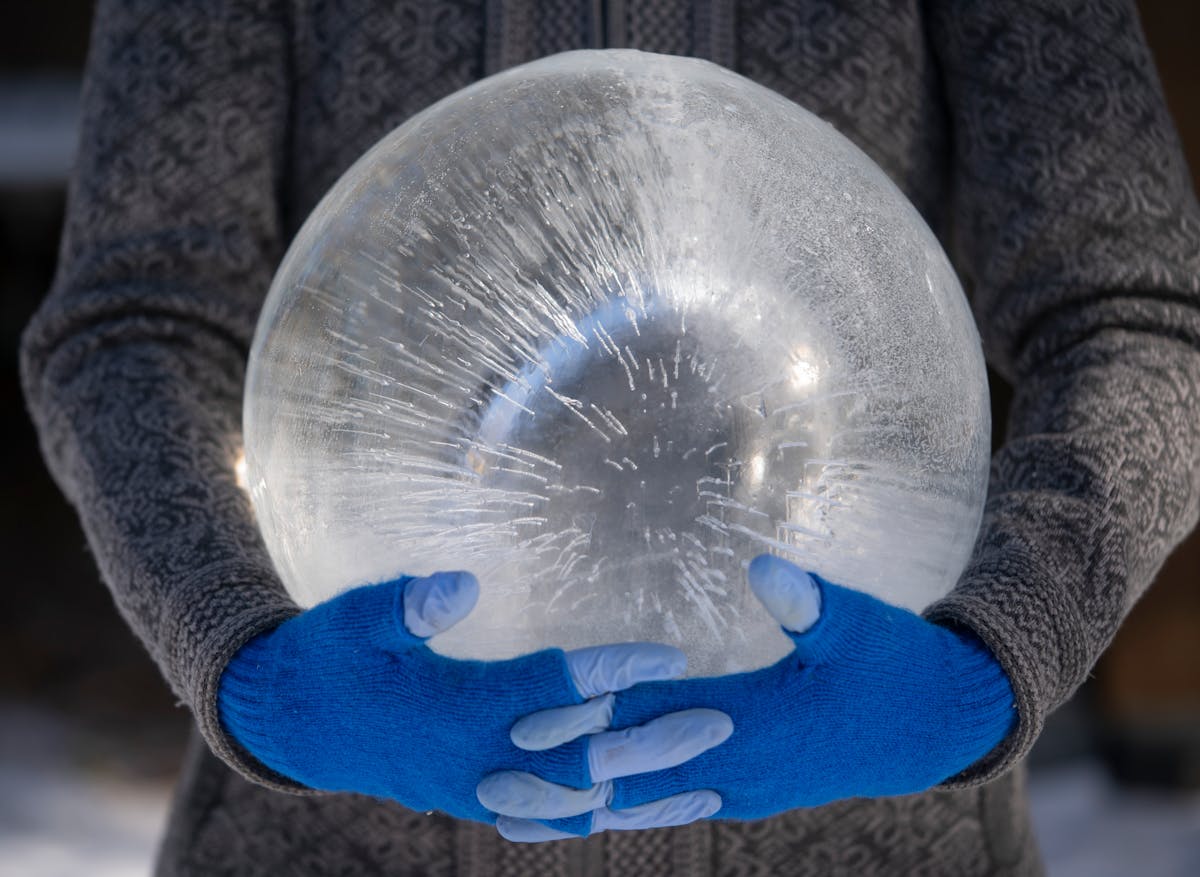We can get used to being in chilly weather and it can boost our health. But use caution.
The cold has a special place in Jennifer Shea Hedberg’s heart.
Only frigid weather allows her to create her fanciful, glowing ice installations. Only the cold allows them to last.
“That’s my pet peeve, when I hear people talking about how wonderful it’s going to be because it’s going to be 40 degrees,” said Hedberg, who goes by @icewrangler on Instagram. “That’s the worst, because everything turns to muck.”
Truly loving the cold like Hedberg does may be a stretch for some of us, but for the Embrace Winter challenge, we’re going to give it a try. There are good reasons to do so.
The cold can enhance many of the benefits we get from being outdoors, from reducing stress to increasing energy. Consistent exposure to the cold makes us less sensitive to it and even causes some people to burn calories more efficiently.
Embrace Winter
30 day Challenge
For the Embrace Winter Challenge, our goal is to spend at least 30 minutes outside each day. On the coldest days, feel free to break your time into several short forays. And if the temperature and windchill are stuck in dangerous lows, consider it a free day. Start tracking your time, using whatever’s handy — a calendar, a journal or your phone’s Notes app. You also can print out a free tracking poster from 1,000 Hours Outside.
A mood boost is one of the first changes you might notice, said Dr. Chad Asplund, a sports medicine doctor at Mayo Clinic Square in Minneapolis.
“You can improve your mood, immune function, your bone health and burn more calories by exercising outdoors in the cold,” he said.
“When you’re in the cold, you have to use a little bit more energy to be active, so you’ll burn more calories,” Asplund said. “And because you spend a lot more energy trying to cool yourself off than you do warming yourself up, you can usually exercise more efficiently in the cold weather, so you can get a better workout.”
After regularly spending time outside in chilly weather, the receptors in our skin become acclimated to lower temperatures. That’s why the same mercury reading doesn’t feel as cold in February as it does in October.
“When [the receptors] have had a prolonged exposure to cold, they become less sensitive to the cold and so you actually do get used to it,” Asplund said.
Wintry temperatures can also trigger our bodies to convert white adipose tissue (regular fat that stores energy) into brown fat, which burns calories and generates heat, Asplund explained. Babies are born with this kind of fat to help them maintain their core temperature, but people generally have less of it as they age.
“Brown fat is important because it burns calories. It can generate heat. Seals have brown fat, polar bears have brown fat. That’s why they can be outside at that temperature,” he said.
So will spending 30 minutes a day outdoors for the Embrace Winter Challenge trigger this change? It’s complicated, said Asplund, but maybe.
Though being able to convert white fat to brown fat is thought to have a genetic link, “it’s quite possible that the challenge could increase the amount of brown fat in those people who are susceptible to making that change,” Asplund said.
While being in the cold offers plenty of benefits, severe cold can be dangerous.
“If the combined temperature and the windchill are above zero, or certainly above 10 below, the benefits from being outside are much greater than the risks. Once you get a little bit colder, then the risks outweigh the benefit,” Asplund said. If the combination is minus 18 or lower, he recommends not going outside.
Dressing in layers, with a high-tech fabric (no cotton) closest to your body to keep dry, is also key to avoiding the cold’s dangers, like hypothermia.
One wintertime activity Asplund is not a big proponent of? Taking polar plunges into icy lakes.
“You get that adrenaline rush, just like you would if you were being chased by a lion,” he said. “But from a medical standpoint, there’s more risk than benefits.”
Embrace Winter Challenge two
Make an ice lantern

Jennifer Shea Hedberg, the author of the “Ice Luminary Magic: The Ice Wrangler’s Guide to Making Illuminated Ice Creations” has turned her southwest Minneapolis front yard into a exhibit of all that is possible with water, freezing temperatures and some basic vessels. Photo by Jeff Wheeler.
This week, we’ll put the cold to beautiful use by making an ice lantern and light up the long winter nights. Here is “Ice Wrangler” Jennifer Shea Hedberg’s basic instructions:
1. Fill a plastic utility bucket until water is about an inch from the top of the bucket.
2. Put the bucket outside and let it sit until the ice is 1 to 2 inches thick.
3. Bring the bucket inside and flip it over into a sink or bathtub. Let it thaw for just 15 minutes, and then slide the bucket off and pour out the water in the lantern’s center.
4. Find a spot to set it up outside. Put a candle inside or take a cluster of outdoor lights and put them in the center of the ice lantern and turn it upside down.
5. If you want to get fancy, check out Hedberg’s how-to book, “Ice Luminary Magic,” or go to wintercraft.com.
6. Share photos of your ice creations on Instagram using our #StribMinnesota or send by e-mail to erica.pearson@startribune.com.

